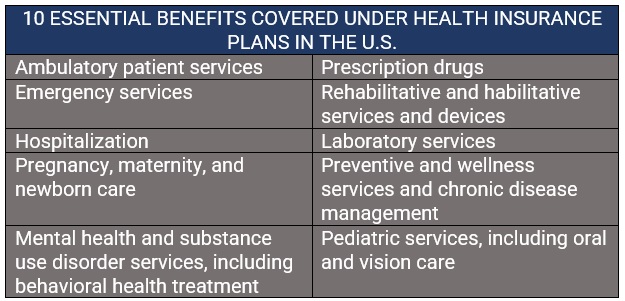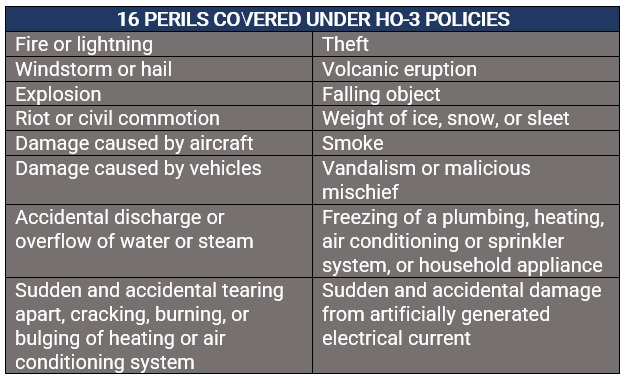

Individuals and businesses searching for the right coverage have access to a myriad of insurance types. But regardless of where they are in the world, this popular financial instrument serves one important purpose – to protect the assets they worked hard for and the people they love the most.
In this article, Insurance Business lists down the different insurance types everyone should consider purchasing to ensure they are financially protected. This is part of our client education series, and we encourage insurance agents and brokers to share this article with customers to help them sort through the different coverages available.
Here are the main insurance types that many industry experts say are worth taking out and how each coverage type works in different parts of the world.
In most regions, motorists are required to carry at least a certain level of coverage to legally operate a vehicle. Getting caught driving without one can result in hefty penalties and may impact future eligibility for obtaining coverage.
In the US, nearly every state mandates that drivers have to have the following coverages, according to the Insurance Information Institute (Triple-I):
Canadian provinces and territories have their own rules and regulations when it comes to mandatory coverage. Because each implement different car insurance systems, there are also varying requirements. But there are also similarities. These are:
In the UK, the government requires drivers to take out third-party insurance. This covers damage or injury caused by the policyholder to another person, vehicle, animal, or property. Just like liability coverage in other countries, it does not cover damages to the policyholder’s vehicle.
Australia mandates that drivers carry at least one type of coverage – compulsory third-party (CTP) insurance. Also known as green slip insurance in New South Wales or transport accident charge (TAC) in Victoria, CTP insurance covers the driver’s liability if other people are injured or killed in a vehicular accident. This type of policy, however, does not cover injuries to the driver and their passengers, and damages to any vehicle or property. This type of coverage is paid for when car owners renew their vehicle registration.
Health insurance policies are aimed at helping policyholders offset the costs of medical treatment by covering a part of the professional and hospital fees the policyholder incurs. Because each country implements a different public healthcare system, the level of need for private health plans also varies.
Due to the high cost of healthcare in the US, taking out health insurance is necessary for many Americans to be able to afford the necessary medical care. According to the government’s health insurance exchange website HealthCare.gov, health coverage comes in several forms aimed at meeting the varying needs of policyholders.
Among the kinds of policies currently available in the market are:
US health insurance plans are required to cover a list of 10 “essential health benefits.” This is the result of the standardization of insurance plan benefits under the Affordable Healthcare (ACA).

Birth control and breastfeeding coverage are also required benefits. Dental and eye care coverages for adults and medical management programs, however, are not considered essential benefits, but are available as optional extras.
Read more: Top 10 health insurance companies in the US
Canada’s healthcare system is regarded as one of the best in the world, providing all citizens and permanent residents free access to emergency care and regular doctor visits. However, there are still certain services that Medicare – the country’s universal health coverage – does not cover. These include eye and dental care, outpatient prescription drugs, rehabilitation services, and private hospital rooms, which Canadians need to pay for, either out of pocket or through supplemental private insurance.
The country’s public healthcare system covers many of the “basics.” These include:
Each province and territory implement their own rules when it comes to health coverage, so the exclusions may vary. For the following items and services, private health insurance may be necessary to obtain cover, depending on where a person resides.
UK citizens and permanent residents are entitled to free healthcare through the National Health Service (NHS). Coverage typically includes:
People also have the option to take out private health insurance, which allows them to access specialists more quickly, avoid long waiting times, and use better facilities.
Despite having access to one of the best public healthcare systems in the world, Australians may still need to endure long waiting times for non-life-threatening procedures. They may also need to pay for certain services that Medicare – the country’s universal health insurance – does not cover. These include ambulance, dental, optical, and chiropractic care.
This is the reason why the government is encouraging citizens to take out private health insurance through tax incentives and premium rebates.
Private health insurance in Australia is designed to pay out for medical expenses that are not covered under the public healthcare system and Medicare. It can also cover the cost of treatment in a private hospital or if one chooses to be treated as a private patient in a public hospital. Policies must be bought from registered health insurers.
Private health coverage comes in two main types:
Ambulance cover, which includes emergency transport and medical care, can also be purchased in most states and territories, except in Queensland and Tasmania as these states already provide automatic coverage for permanent residents.
Life insurance works almost exactly the same in different regions, although policy names may vary. This type of coverage provides a tax-free lump-sum payment to the policyholder’s family after they die. Coverage comes in different forms, but generally falls into two categories:
This type of policy covers the insured for a set term, paying out the death benefit if the policyholder dies within a specified period. This means payments can also be accessed in the years that the plan is active. Once the term expires, the insured can either renew or terminate the plan.
Unlike term life insurance, a permanent policy does not expire. It is also referred to as whole of life policy in the UK. In the US and Canada, coverage comes in two main types, each combining the death benefit with a savings component.
A life insurance policy covers almost all types of death, including those due to natural and accidental causes, suicide, and homicide. Most policies, however, include a suicide clause, which voids the coverage if the policyholder commits suicide within a specific period, usually two years after the start of the policy date.
Some life insurance providers may also deny a claim if the policyholder dies while engaging in a high-risk activity such as skydiving, paragliding, off-roading, and scuba diving. Additionally, an insurer may reject a claim based on the circumstances surrounding the death. For instance, if the beneficiary is responsible for or involved in the policyholder’s death.
Life insurance policyholders are required to designate a beneficiary. This can be the insured’s spouse, immediate family, other relatives, friends, business partners, or even a charitable organization. Policyholders are also allowed to name several beneficiaries for their life insurance plans and assign how much benefit each person or group will receive.
There are two types of beneficiaries:
You can also learn more about 15 largest life insurance companies in the US here.
Read more: What is life insurance and how does it work?
Home insurance, also referred to as homeowners’ insurance in the US and Australia, is not legally required in many countries, although lenders set it as a condition for taking out a mortgage. Despite not being compulsory, many industry experts still recommend property owners to take out coverage given the huge financial investment most people make when buying a home.
According to Triple-I, a standard homeowners’ insurance policy in the US provides four essential types of protection:
HO-3 policies are the most popular type of home insurance as it provides the widest coverage. These policies protect against these 16 perils:

Other insurance types available for US homeowners are:
Canadian property owners have three types of home insurance policies to choose from, each providing different levels of protection.
Homeowners in the UK and Australia can access two main types of coverage for their properties:
Buildings insurance covers the cost to repair, rebuild, or replace the structure of the home, along with its fixed fittings, if it is damaged by a man-made or natural disaster. This includes fire, smoke, storm, flooding, falling objects, subsidence, or vandalism.
This kind of coverage typically insures the home’s physical structure – including the walls, ceiling, and roof – and permanent fixtures – including fitted kitchens, internal doors, integrated appliances, and bathroom suites. Some policies also cover external structures not attached to the house such as garages, sheds, and fences.
Contents coverage, meanwhile, pays out the cost of replacing personal belongings inside the home if they are stolen or damaged. In the UK, coverage comes in two main types:
Contents insurance mostly covers the following items:
One of the biggest benefits of getting the right insurance type is the peace of mind of knowing that if accidents and disasters strike, you have the financial means to rebuild your life. Having proper coverage also means that the road to recovery from unexpected events is often faster and smoother sailing.
What about you? What other insurance types do you feel are essential to protect your assets? Share your thoughts in our comment section below.
